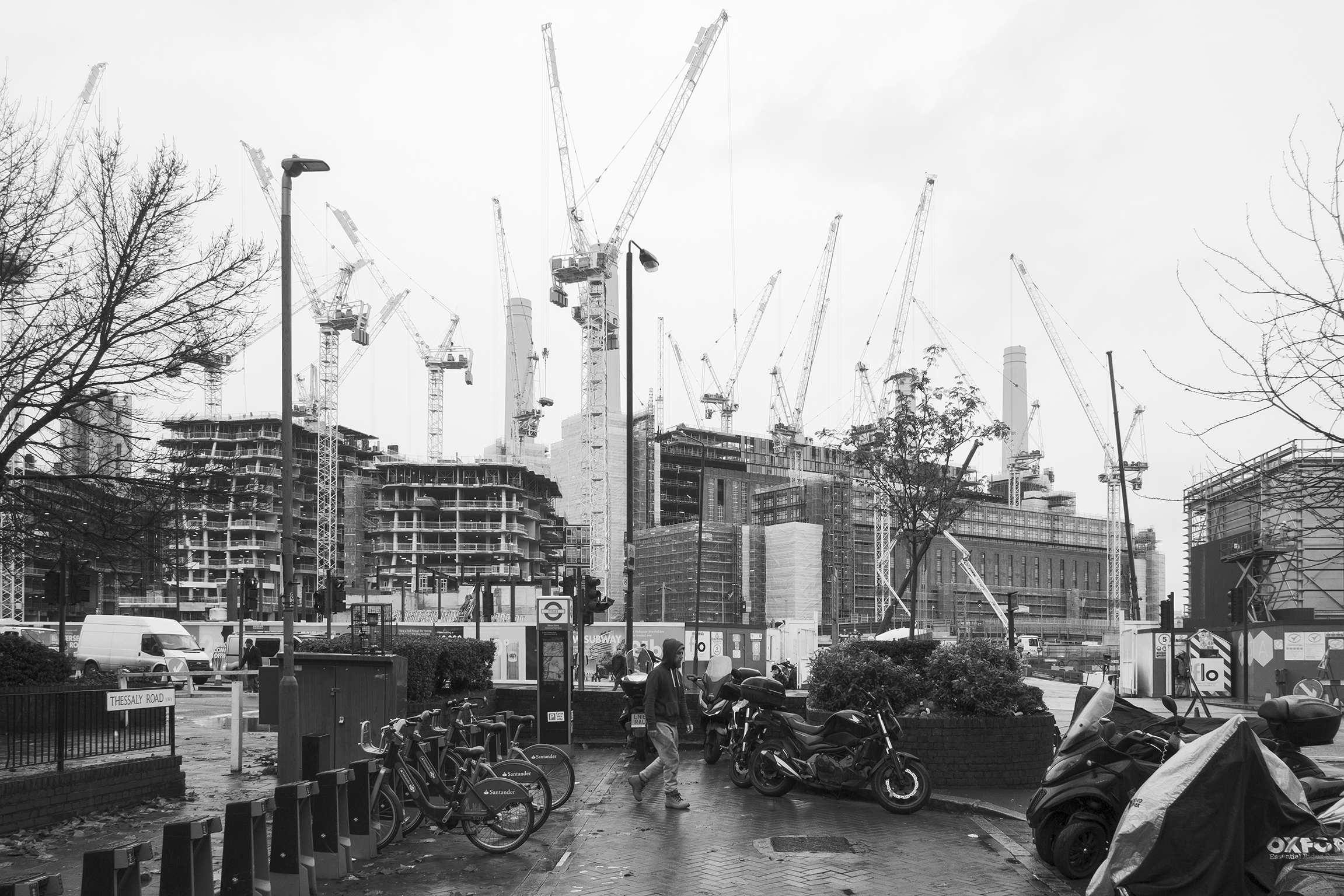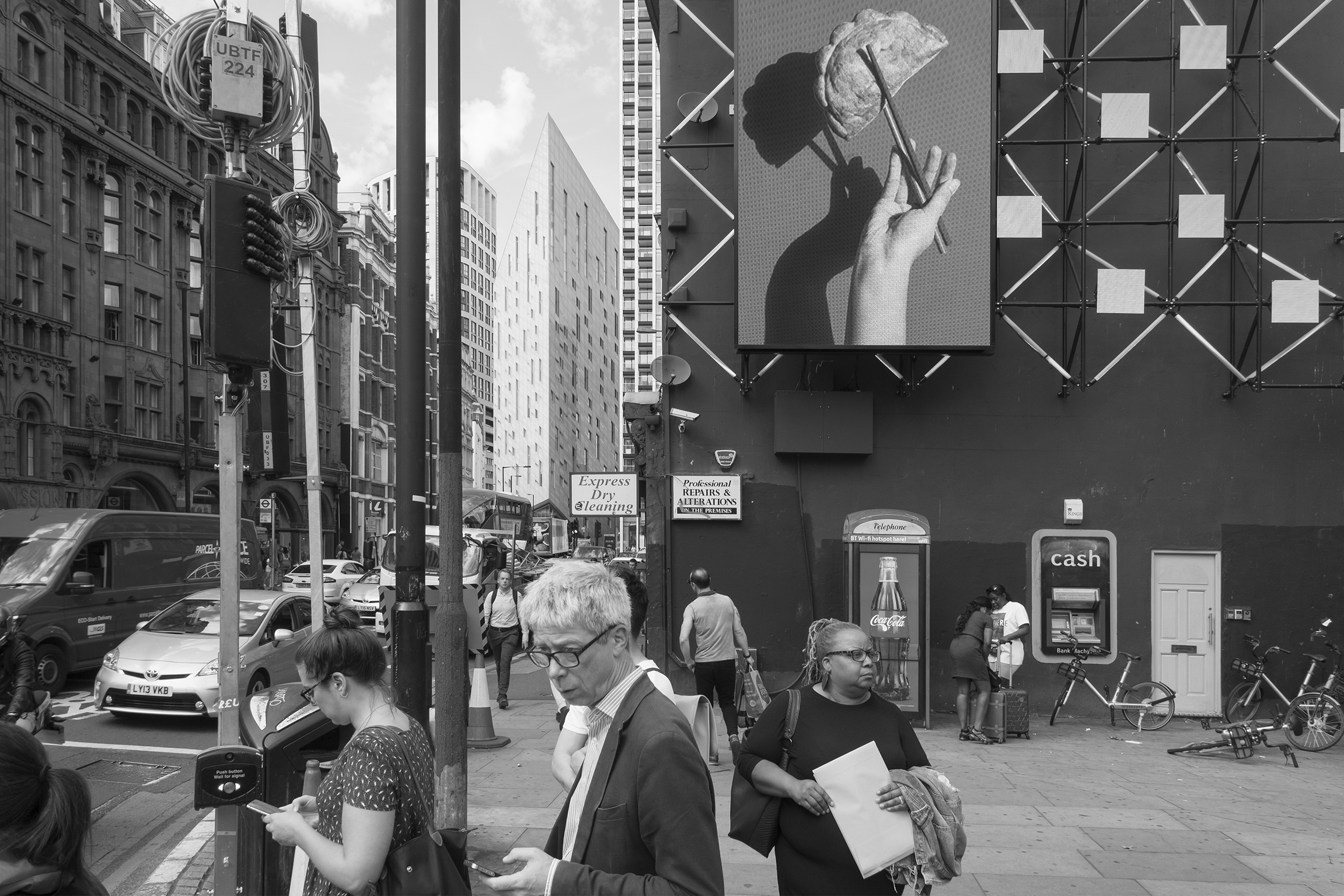The Platform
( London ) – 2019 / 21
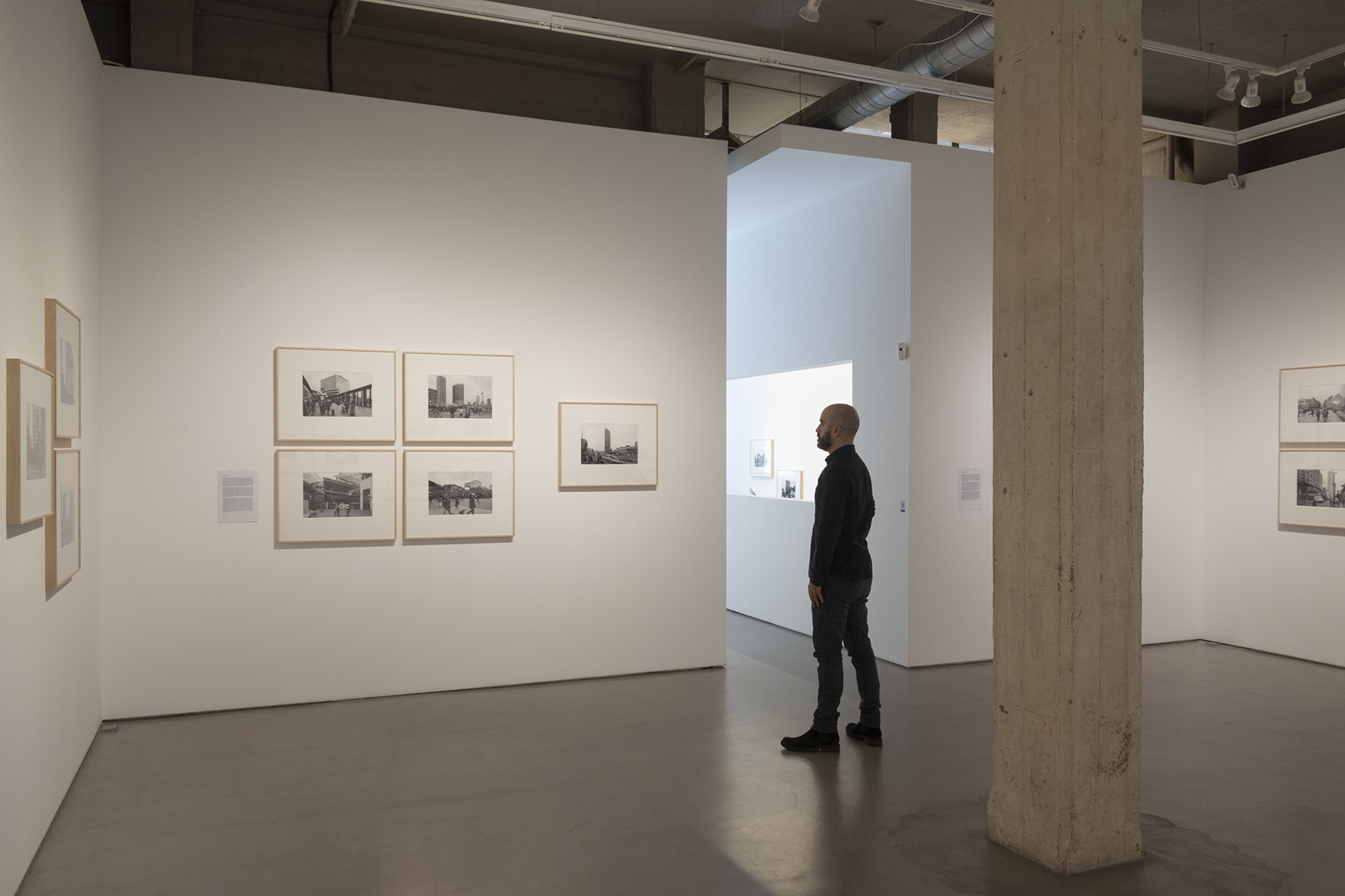
Abstract
"The Platform" is an observation of the impact of the economic model on urban growth. The series documents the transformation of the city after the 2008 financial crisis, providing a panoramic view of its current development state through a selection of strategic locations. Although scattered across the map, these places form a single emerging urban system. Perhaps that is why they are particularly revealing when it comes to explaining both the accelerated financialization of the city and the implications that this new mode of growth has on the lives of its inhabitants.
The work features a dozen sites that stand on the ruins of the modern city. These locations, such as the Canary Wharf financial center, built on the site of the old port, have continued to expand since Margaret Thatcher's government promoted their construction. Other sites include the neighborhood for young professionals and international students that replaced Elephant and Castle's Heygate Estate, one of the city's largest public housing complexes, demolished after a long period of social and architectural decline; or the iconic Battersea Power Station which has been converted into a luxurious mixed-use, housing Apple's new European headquarters.
These sites, born of a process of expulsion and historical erasure, reveal how the new paradigm of urban growth ignores elements that have traditionally united public space. The new metropolis appears as the by-product of finance capital setting their sights on the territory, reduced to a mere production platform. New housing developments, amassed by large investment groups, remain empty for most of the year. Meanwhile, due to the constant increase in housing prices, the population is forced to reside increasingly farther away from the centres of influence. As the urban sociologist Saskia Sassen has stated, the city grows as it empties.
Sinopsis
La serie The Platform es una observación del impacto del modelo económico en el crecimiento urbano que documenta la transformación de la ciudad después de la crisis financiera de 2008, ofreciendo una vista panorámica de su estado de desarrollo a través de una selección de ubicaciones estratégicas. Aunque dispersos por el mapa, estos lugares forman un único sistema urbano emergente. Quizás por eso resultan especialmente reveladores a la hora de explicar tanto la acelerada financiarización de la ciudad como las implicaciones que este nuevo modo de crecimiento tiene en la vida de sus habitantes.
El trabajo recopila una docena de emplazamientos que se levantan sobre las ruinas de la urbe moderna. Lugares como el centro financiero de Canary Wharf que, erigido sobre los terrenos del antiguo puerto, no ha dejado de crecer desde que el gobierno de Margaret Thatcher impulsara su construcción; el barrio para young professionals e international students que sustituyó en Elephant & Castle al Heygate Estate, uno de los conjuntos de vivienda pública más grandes de la ciudad, demolido tras un largo proceso de degradación social y arquitectónica; o la icónica Estación Energética de Battersea, que convertida en un lujoso complejo de uso mixto alberga las nuevas oficinas europeas de Apple.
Nacidos de un proceso de expulsión y borrado histórico, estos sitios dan cuenta de cómo el nuevo paradigma de crecimiento urbano se caracteriza por ignorar los elementos que tradicionalmente habían cohesionado el espacio público. Reducida a mera plataforma de extracción, la nueva metrópolis aparece como el subproducto del capital financiero fijándose en el territorio. Los nuevos desarrollos, acumulados por grandes grupos de inversión, permanecen vacíos la mayor parte del año. Mientras, a causa del constante incremento del precio de la vivienda, la población se ve obligada a residir cada vez más lejos de los centros de influencia. Como ha expuesto la socióloga urbana Saskia Sassen 2, la ciudad crece vaciándose.
1. Vauxhall, Nine Elms, Battersea

After decades of neglect and several failed attempts, the strip of land between the Chelsea and Vauxhall bridges is finally being regenerated. The former industrial site covers an area of 227 hectares along the south bank of the Thames, so close to sites such as Victoria Station and Westminster that the journey can be made on foot. It is a privileged location, in which in a few years around 20 major urban developments will be undertaken.
In 2008, the announcement of the transfer of the U.S. Embassy to a new building in Nine Elms was the starting signal for the conversion of the area. Shortly afterwards, in 2010, the start of the extension of the Northern Line1 from Kennington to Battersea was an irresistible incentive for large international investors. Around 20,000 new homes have been planned in the area. The councils of Lambeth and Wadsworth have announced that 40% of the housing built by the developers should be affordable. The regulations do not, however, prevent the inhabitants of these houses from being forced to use so-called poor doors, auxiliary entrances designed to segregate the less advantaged residents, or from restricting their access to community services. Neither does the rule prevent affordable housing from being acquired by private investment groups. Agreed reductions in the affordable housing quota in exchange for financial contributions or the construction of infrastructures are also normal.
Among the most outstanding developments is Embassy Gardens, a new “diplomatic sector” promoted by the Irish company Ballymore and made up of 1,982 homes (already on the market, starting at £1,000,000), cafes, restaurants, business spaces, a health centre, sports facilities and a hotel with 100 rooms, which boasts an investment of £2.5 billion and the backing of two giants of the stature of Lazard and CBRE Group2. Guangzhou R&F Properties, a Chinese real estate company, will invest £1 billion in the construction of two office buildings and two 52-storey towers with 558 apartments. The largest brick building in Europe, Battersea Power Station, will stand out in a sea of glass that after an investment of £1,583,000,000, will be converted by PNB and EPF, two of the largest investment groups in Malaysia, into a multi-use complex that will include offices, housing and a luxury shopping centre, and where Apple will establish its headquarters. All of this will be linked by a new linear park that will allow visitors and residents to walk along the riverbank from the old station to Tower Bridge.
1. The Northern Line extension is a project budgeted at £1,000,000,000 that will provide a fast and direct connection to the City and King’s Cross, among other strategic locations.
2. The largest financial management and advisory company and the largest commercial real estate investment and services firm in the world respectively.
1. The Northern Line extension is a project budgeted at £1,000,000,000 that will provide a fast and direct connection to the City and King’s Cross, among other strategic locations.
2. The largest financial management and advisory company and the largest commercial real estate investment and services firm in the world respectively.

2. Elephant & Castle
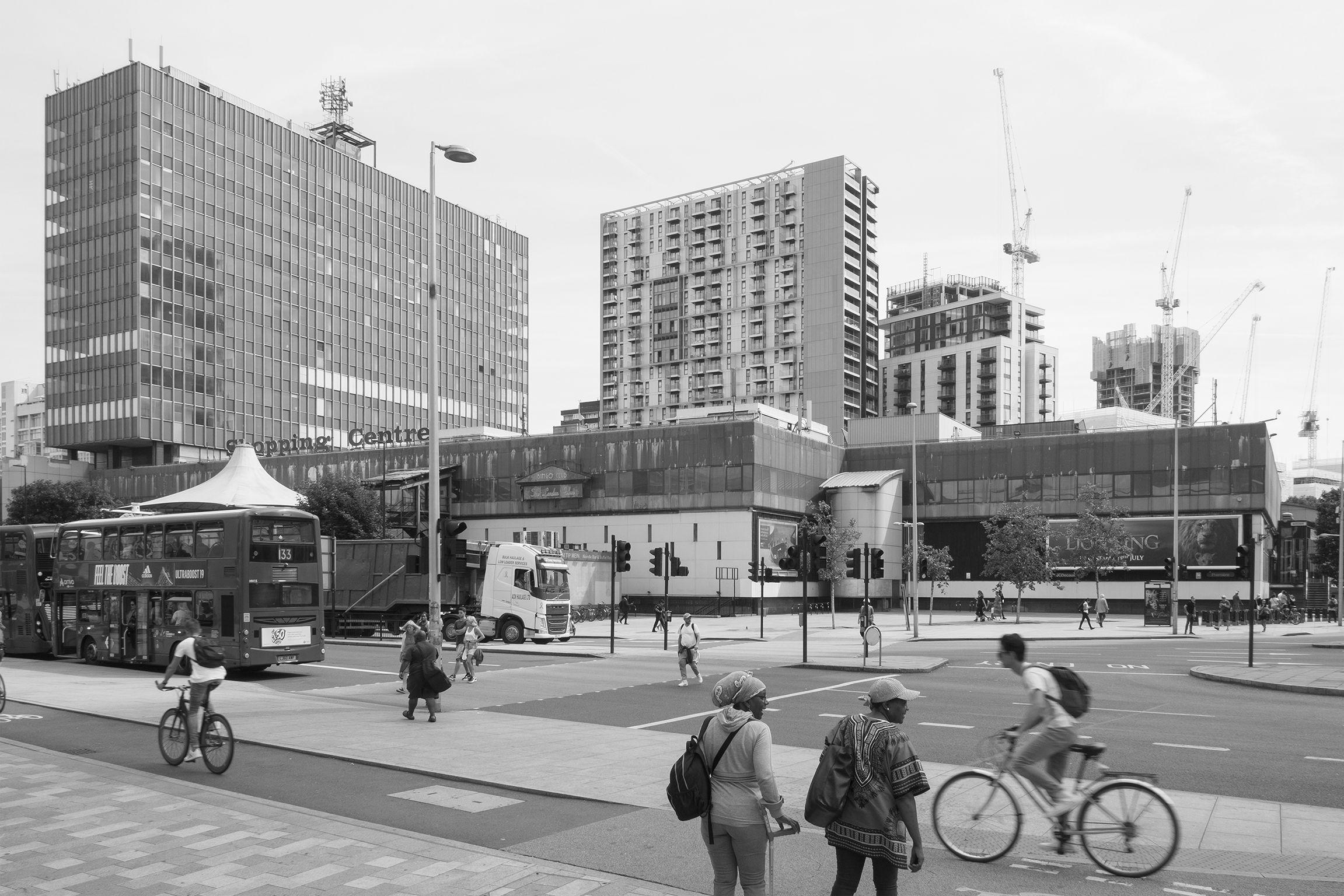
Despite promises made by the Southwark Council, when the last residents of the Heygate Estate were evicted in March 2010, no alternative housing was available. The brutalist block complex designed by the architect Tim Tinker in 1974 had 1,214 council houses, which despite opposition from a large number of residents calling for their rehabilitation, were demolished in 2013. Little had the residents been able to do against a smear campaign that lasted more than a decade. The costs of compensation paid to homeowners, demolition work and a regeneration project that never got off the ground amounted to £80,000,000. Shortly afterwards, a blunder brought to light that the 9-hectare site had been sold to the Australian company Lend Lease Group for only £50,000,000. In times of recession and cutbacks, the Council’s debt seemed to have become unsustainable. Like Southwark, other councils sold off significant amounts of public land during the years following the 2008 financial recession. Most of the old community of residents was broken up into different areas on the periphery. A few, however, were able to gain access to the one hundred apartments that the Family Mosaic Housing Association1 had acquired and put on offer in Shared-Ownership2 on the ground floors of the new Strata Tower, which since 2010 has outlined the city’s skyline with its three turbines.
![]()
Lend Lease, known in the city as the builder of the Olympic Village in Stratford, designed the Elephant Park development on the site, a multi-building complex that will bring together 2,689 homes (541 of which will be subject to the Affordable Housing quota and only 92 of which will be used for social renting) and offices (up to 15,250 m2 of floor space), to be completed in 2025. This project, together with two other residential developments that the company has already completed in the area, Trafalgar Place and One The Elephant, will require an investment of around £23 billion.

Lend Lease, known in the city as the builder of the Olympic Village in Stratford, designed the Elephant Park development on the site, a multi-building complex that will bring together 2,689 homes (541 of which will be subject to the Affordable Housing quota and only 92 of which will be used for social renting) and offices (up to 15,250 m2 of floor space), to be completed in 2025. This project, together with two other residential developments that the company has already completed in the area, Trafalgar Place and One The Elephant, will require an investment of around £23 billion.
 Other major projects are in the pipeline, such as the demolition of the old shopping centre that brings together much of the local retail trade, mostly run by local people, and which acts as a meeting place for the neighbourhood’s Latino community. On the site of what was in 1965 the first large roofed shopping centre in Europe and whose design (Boissevain & Osmond for Willets Group) set a standard in the design of this type of building, a new and larger shopping centre, 374 homes and 278 student units, a Sainsbury’s supermarket, an extension of the underground station and a new campus for the LCC (London College of Communication, part of the University of the Arts or UAL) will be built over a period of 10 years. Associated with UAL, the company in charge of undertaking this regeneration will be Delancey, financially backed by George Soros and the Qatari dictatorship, and directed by Jamie Ritblat, the son of the real estate magnate Sir John Ritblat (British Land Company) and a prominent donor to the Conservative Party. The property has now been registered in the Virgin Islands. Also registered offshore is Get Living, its rental housing subsidiary with assets of £1 billion.
Other major projects are in the pipeline, such as the demolition of the old shopping centre that brings together much of the local retail trade, mostly run by local people, and which acts as a meeting place for the neighbourhood’s Latino community. On the site of what was in 1965 the first large roofed shopping centre in Europe and whose design (Boissevain & Osmond for Willets Group) set a standard in the design of this type of building, a new and larger shopping centre, 374 homes and 278 student units, a Sainsbury’s supermarket, an extension of the underground station and a new campus for the LCC (London College of Communication, part of the University of the Arts or UAL) will be built over a period of 10 years. Associated with UAL, the company in charge of undertaking this regeneration will be Delancey, financially backed by George Soros and the Qatari dictatorship, and directed by Jamie Ritblat, the son of the real estate magnate Sir John Ritblat (British Land Company) and a prominent donor to the Conservative Party. The property has now been registered in the Virgin Islands. Also registered offshore is Get Living, its rental housing subsidiary with assets of £1 billion.1. Housing Associations are private entities, usually non-profit, which acquire and manage real estate classified as Affordable. Although this type of organization has been in existence for a long time now, it was not until the deregulation of the public housing system in the 1980s that they were consolidated as the main suppliers of affordable housing.
2. A modality by which the tenant and the association share the ownership of the home, thus allowing the former to acquire it, benefiting from advantages and periods that do not exist in the free market. Although access to this modality is restricted, it is more flexible than in the case of public social housing.

3. Old Kent Road

Of Celtic origin, paved in Roman times and travelled in the Middle Ages by pilgrims on their way to Canterbury, the Old Kent Road is now one of the main arteries in the south east of London. It is part of the A2, the road that connects the centre of the capital with the port of Dover and the maritime trade routes from Europe. In the early nineteenth century the upper and middle classes, driven away by early industrialization, abandoned their homes in the vicinity of the old country road. Industry then led to an abundant influx of working families that made the areas around the old road one of the most densely populated points in the city. After the Second World War, even though most of the urban fabric survived the Nazi bombing, many of the nineteenth-century buildings were demolished and replaced by new social housing blocks to solve the shortage of living space.
![]()
On the east side of the road, in Bermondsey, the South Metropolitan Gasworks had been producing gas since 1833 to supply many of the nearby towns from Southwark to Croydon; from 1811 to 1970, the Surrey Grand Canal crossed the roadway, enabling transport and the rapid distribution of building materials and other goods from Rotherhithe to the towns of Peckham and Camberwell; in the west, in 1951 the London Essences Company installed a soap and perfume processing plant on the ruins of the former Robert White and Sons Ltd. lemonade and ginger beer factory. In the 1960s the neighbourhood was a refuge for the Richardson Gang, a violent and notorious criminal gang whose role was crucial in the construction of the black legend. David Bowie, for example, used a room on the second floor of the Thomas A. Becket Public House to rehearse when he was recording “The Rise and Fall of Ziggy Stardust”, in the same place where European and Commonwealth heavyweight champion Sir Henry Cooper trained daily for fifteen years. It closed down in 2015 and has been on the market since then. A good example of the depression the street has suffered is the thirty-nine pubs that have closed since the late 1980s. Industrial activity, except for a number of small, scattered workshops, has completely disappeared.

On the east side of the road, in Bermondsey, the South Metropolitan Gasworks had been producing gas since 1833 to supply many of the nearby towns from Southwark to Croydon; from 1811 to 1970, the Surrey Grand Canal crossed the roadway, enabling transport and the rapid distribution of building materials and other goods from Rotherhithe to the towns of Peckham and Camberwell; in the west, in 1951 the London Essences Company installed a soap and perfume processing plant on the ruins of the former Robert White and Sons Ltd. lemonade and ginger beer factory. In the 1960s the neighbourhood was a refuge for the Richardson Gang, a violent and notorious criminal gang whose role was crucial in the construction of the black legend. David Bowie, for example, used a room on the second floor of the Thomas A. Becket Public House to rehearse when he was recording “The Rise and Fall of Ziggy Stardust”, in the same place where European and Commonwealth heavyweight champion Sir Henry Cooper trained daily for fifteen years. It closed down in 2015 and has been on the market since then. A good example of the depression the street has suffered is the thirty-nine pubs that have closed since the late 1980s. Industrial activity, except for a number of small, scattered workshops, has completely disappeared.
Although the street is located in the city’s metropolitan area, Southwark Council never thought it would be suitable to become an attractive centre. The area has suffered the consequences of poor organization, aggravated by a lack of planning and the construction of large commercial parks, more typical of outlying areas than of urban centres, scattered along its long wide route. However, on what has so far been the cheapest street on the Monopoly board, three new tube stations are now being planned. After three public consultations, Transport for London has closed the route in order to extend the Bakerloo Line. The first phase will involve five stops from Elephant & Castle to Lewisham, three of which will be on the street and one at New Cross Gate, next to Goldsmith’s University. Although the work will not be completed until 2028, the prospects for growth are already apparent. The Southwark Council has already prepared a Master Plan for the regeneration of the Opportunity Area, which foresees the construction of around 20,000 homes in the coming years. The new Old Kent Road is underway: the developer Avanton has already undertaken the construction of the Ruby Triangle, a set of residential and studio towers for entrepreneurs that will be built on the derelict industrial estate of the same name. The development will be subject to the 40% Affordable Housing quota that is mandatory for this part of the district. A new higher education college, primary and secondary schools and a health centre are currently being planned in anticipation of the potential growth to come. As a spur to the great future regeneration, the promoters have announced the integration of the new urban fabric by means of a green spine of linear parks. It was a good idea, but one which had already been thought out and delivered, thanks to the pressure of neighbourhood movements, by the Docklands Development Corporation in 1981, when the aforementioned Surrey Canal was converted into a park after a decade’s abandonment. Although the extension of these garden walks is included in the project, it is historically inaccurate to present it as a novelty brought about by the “radical ecological commitment” of the developers.
![]()
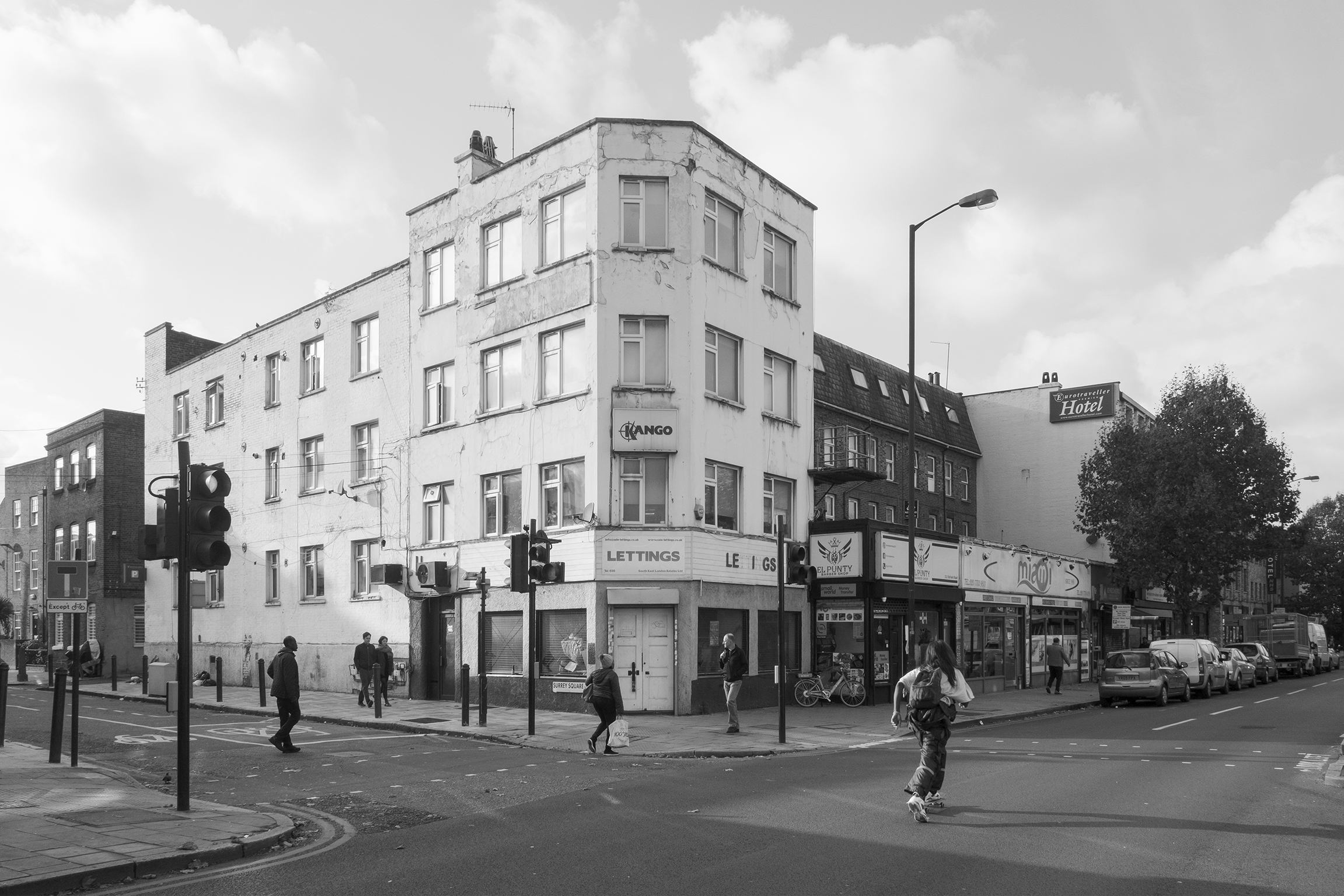
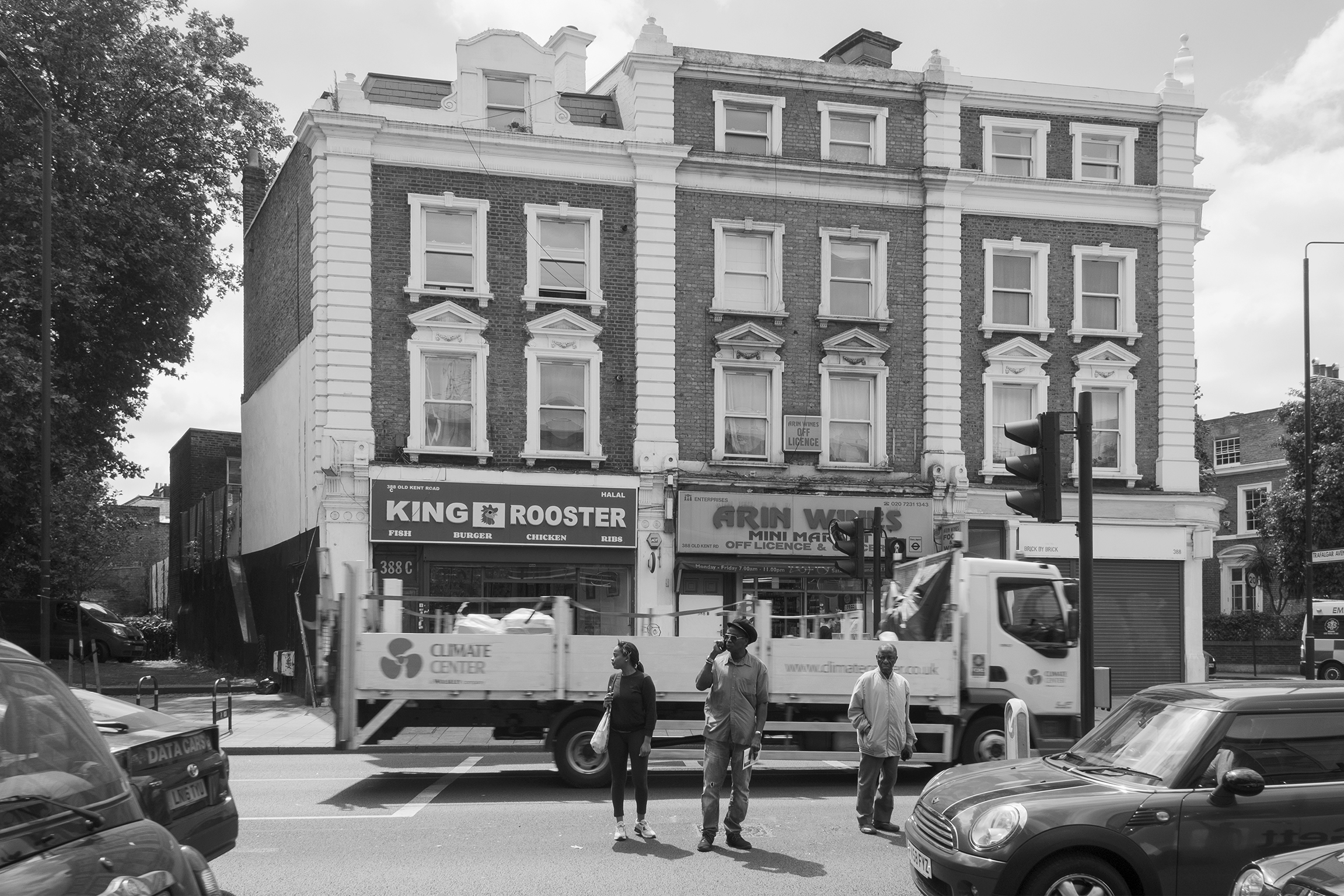
4. Greenwich Peninsula

The manufacture of gas from coal and oil, which had
served to supply the city with energy and work for two centuries, became
obsolete when the existence of natural gas in the North Sea was confirmed. By
the end of the 1990s, most of the gas-producing industry had ceased to operate.
The Greenwich peninsula was home to some of the largest and most productive
facilities in the world, so its closure meant that a vast amount of land was
left unused. In 1997, English Partnership1 acquired a huge piece of barren land.
After the soil was decontaminated, a large pavilion was planned to be built on
the 1.21 km2 site to house the Festival of Britain, a world exhibition to usher
in the third millennium. The project was conceived during the mandate of the
conservative John Major but it was without doubt Tony Blair who took the
planning to a new dimension. The Millennium Dome, as the great pavilion was
called, was entrusted to Richard Rogers and it was Sir Robert McAlpine who was
in charge of construction. The funds for the project came from the National
Lottery Fund, a public company operated since 1994 by the Camelot Group2, and amounted
to £603,000,000. In the words of the Labour Prime Minister, the Dome would mean
the “triumph of confidence over cynicism”.
In 1999, in time for the celebrations, the North Greenwich underground and bus station was opened, connecting the area to the City, Canary Wharf and the West End in a matter of minutes. The marquee closed its doors a year after it opened, having recovered from ticket sales 189 of the £789 million the project cost. The high cost of maintenance and a lack of business initiative led the government to look for investors and the building was eventually transferred to Meridian Delta Ltd., a consortium led by AEG and owned by the US oil magnate Philip Anschutz, in exchange for a share of the profits. The new owner invested £135,000,000 in turning the pavilion into the current O2 Arena, a large indoor stadium for sports events and concerts surrounded by a huge shopping and entertainment centre, which was used as the venue for the 2012 Olympic Games.
In 1999, in time for the celebrations, the North Greenwich underground and bus station was opened, connecting the area to the City, Canary Wharf and the West End in a matter of minutes. The marquee closed its doors a year after it opened, having recovered from ticket sales 189 of the £789 million the project cost. The high cost of maintenance and a lack of business initiative led the government to look for investors and the building was eventually transferred to Meridian Delta Ltd., a consortium led by AEG and owned by the US oil magnate Philip Anschutz, in exchange for a share of the profits. The new owner invested £135,000,000 in turning the pavilion into the current O2 Arena, a large indoor stadium for sports events and concerts surrounded by a huge shopping and entertainment centre, which was used as the venue for the 2012 Olympic Games.
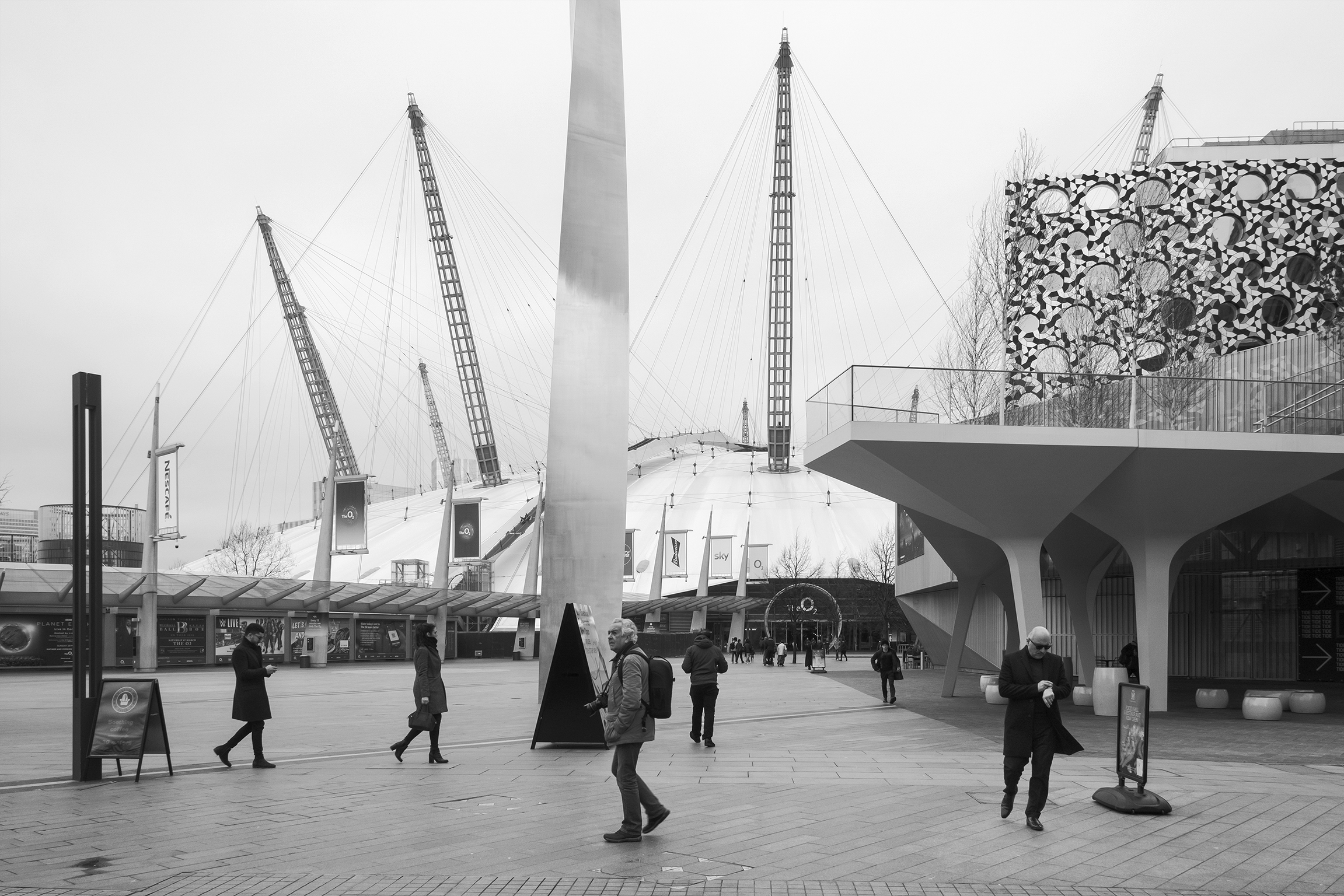 At present growth forecasts in the area are good.
Multiple residential and office buildings are going up as part of a twenty-year
growth plan. Associated with the London and Greenwich City Councils, the
property developer Knight Dragon is leading what is one of the largest
regeneration projects in the city with an investment of £8.4 billion. The new
development incorporates 15,000 new homes, a block for low-cost creative
studies next to Ravensbourne University, which located its headquarters in the
area in 2010, two colleges, new offices, shops and green areas. Among those entrusted
with the design are the interior designer Tom Dixon and the architect Santiago
Calatrava.
At present growth forecasts in the area are good.
Multiple residential and office buildings are going up as part of a twenty-year
growth plan. Associated with the London and Greenwich City Councils, the
property developer Knight Dragon is leading what is one of the largest
regeneration projects in the city with an investment of £8.4 billion. The new
development incorporates 15,000 new homes, a block for low-cost creative
studies next to Ravensbourne University, which located its headquarters in the
area in 2010, two colleges, new offices, shops and green areas. Among those entrusted
with the design are the interior designer Tom Dixon and the architect Santiago
Calatrava.1. Today renamed Homes and Communities Agency, this is a public company that works in urban regeneration.
2. A consortium of private companies formed by International Computers Ltd., Racal and Cadbury-Schweppes.
5. Southbank, Bankside, London Bridge

In January 2000,
after nineteen years of disuse, the Bankside power plant reopened its doors as
a museum of contemporary art. Due to rising oil prices, the plant had ceased to
be profitable in 1973. After a gradual reduction in activity, it closed down in
1981.
![]()
The original building dates from 1891 and after post-war reconstruction by Sir Giles Gilbert Scott, it supplied both the City and North Southwark. Now, the Tate Modern would be a key part of the regeneration of the area, destined to connect the southern bank of the Thames with the City. It was not the first large-scale cultural institution to operate on this strip of land. To the west, next to Waterloo Station, the Southbank Centre, a pavilion built for the 1951 Festival of Britain, had been operating since 1986 as an independent institution, serving as an exhibition and concert venue. On the same site, the National Theatre had opened in 1963 under the management of Sir Laurence Olivier. To the east of the new museum, coming to London Bridge, the public company Pool of London Partnership had invested around £100 million in the regeneration of enclaves with historical value. Among the highlights were the Borough Food Market, Tower Bridge and the HMS Belfast museum ship that has been moored since 1971. Years later, a cultural corridor has been established that is capable of recovering the south bank of the river for the city.
![]()
By the time planning began in 2004, the Tate Modern had become Britain’s second most visited tourist attraction and the world’s busiest museum, counting 30 million visitors since its opening. The expansion project was commissioned to the same architects who undertook the renovation, Herzog & de Meuron. The project consisted of an annexed brick tower to be built on the site of the former power station control facilities. The new building was opened in 2016 under the name The Switch House, in reference to its location. The institution decided shortly afterwards, however, to rename the new wing of the museum after its patron, Sir Leonard Blavatnik, the wealthy owner of Access Industries (a conglomerate of petrochemical, real estate, telecommunications and media companies). By then, real estate fever had invaded the corridor. Next to the Tate Modern, two large groups of buildings had been erected, one for offices and the other for residential use. The first, the 1/2/3 Complex on Southwark Street, was designed by Allies & Morrison LLP and could accommodate 5,000 office workers. The second one was called NEO Bankside and was famous for two reasons: its designers (Rogers Stirk Harbour + Partners) were nominated for the RIBA Stirling Prize in 2015, and its developers (Grossvernor and Native Land) managed to get round the mandatory quota of Affordable Housing, setting a precedent that has now become widespread in the luxury housing market.

The original building dates from 1891 and after post-war reconstruction by Sir Giles Gilbert Scott, it supplied both the City and North Southwark. Now, the Tate Modern would be a key part of the regeneration of the area, destined to connect the southern bank of the Thames with the City. It was not the first large-scale cultural institution to operate on this strip of land. To the west, next to Waterloo Station, the Southbank Centre, a pavilion built for the 1951 Festival of Britain, had been operating since 1986 as an independent institution, serving as an exhibition and concert venue. On the same site, the National Theatre had opened in 1963 under the management of Sir Laurence Olivier. To the east of the new museum, coming to London Bridge, the public company Pool of London Partnership had invested around £100 million in the regeneration of enclaves with historical value. Among the highlights were the Borough Food Market, Tower Bridge and the HMS Belfast museum ship that has been moored since 1971. Years later, a cultural corridor has been established that is capable of recovering the south bank of the river for the city.
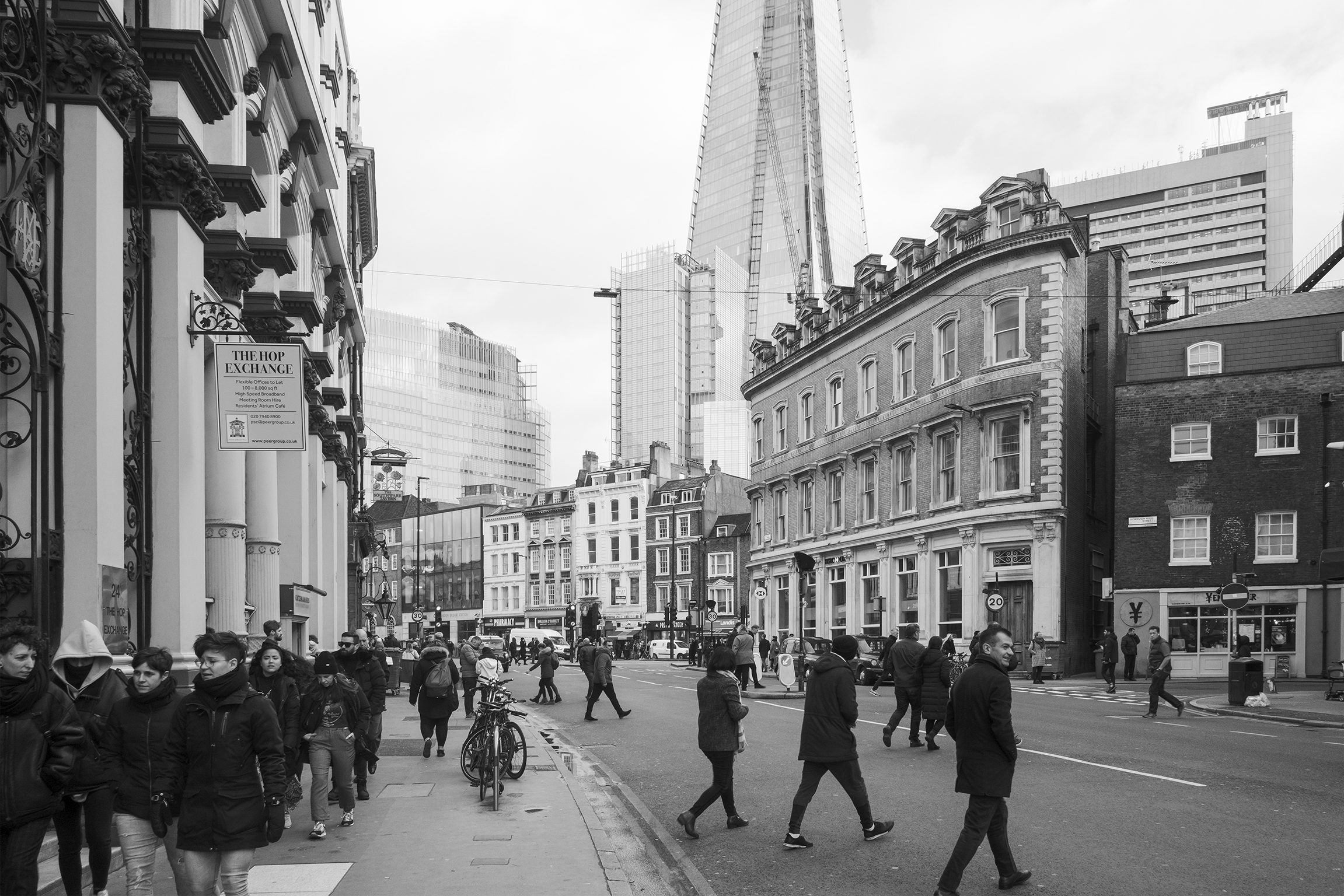
By the time planning began in 2004, the Tate Modern had become Britain’s second most visited tourist attraction and the world’s busiest museum, counting 30 million visitors since its opening. The expansion project was commissioned to the same architects who undertook the renovation, Herzog & de Meuron. The project consisted of an annexed brick tower to be built on the site of the former power station control facilities. The new building was opened in 2016 under the name The Switch House, in reference to its location. The institution decided shortly afterwards, however, to rename the new wing of the museum after its patron, Sir Leonard Blavatnik, the wealthy owner of Access Industries (a conglomerate of petrochemical, real estate, telecommunications and media companies). By then, real estate fever had invaded the corridor. Next to the Tate Modern, two large groups of buildings had been erected, one for offices and the other for residential use. The first, the 1/2/3 Complex on Southwark Street, was designed by Allies & Morrison LLP and could accommodate 5,000 office workers. The second one was called NEO Bankside and was famous for two reasons: its designers (Rogers Stirk Harbour + Partners) were nominated for the RIBA Stirling Prize in 2015, and its developers (Grossvernor and Native Land) managed to get round the mandatory quota of Affordable Housing, setting a precedent that has now become widespread in the luxury housing market.
To the west, in the
vicinity of Waterloo Station, Canary Wharf PLC and Qatari Diar Real Estate
Investment Company have financed the construction of Southbank Place, a complex
of eight towers of homes, offices and commercial spaces at the foot of Jubilee Park,
next to the London Eye. 228 of the 877 homes planned are Affordable Houses (a
total of 26%, with a reduction of 14% on the 40% usually required by Lambeth
Council). Among the architects who were on the team, we could highlight names
such as Squire & Partners (in charge of the development plan), Stanton
Williams, GRID, Patel Taylor and Townshend Landscape. The project was presented
as the continuation of the legacy left by the 1951 Festival of Britain. As they
recalled, the event brought together the best of British talent in the fields
of design, architecture, art and culture. At the height of the post-war era,
the reason behind the festival was to create a sense of successful recovery
among visitors, and although it was widely accepted, it was not without
controversy. The organiser, Herbert Morrison (Baron of Lambeth and a Labour
politician), decided to leave exhibitions with implicit or explicit political
content out of the programme; hence those dealing with the nationalization of
strategic sectors, the universal health system and workers’ housing were all cancelled.
On the other hand, those devoted to scientific progress, town planning and the
arts and crafts served to celebrate the end of the devastation.
![]()
![]()
To the east, London Bridge station was extended and renovated from 2009 to 2017 by the Thameslink expansion programme (a railway operator owned by the Godiva Group). The Shard, the city’s tallest building, was erected on top of it in 2012, following Renzo Piano’s plans. The 95-storey tower was financed by the Qatari authority to the tune of £150 million. Alongside, on a surface area of 53,000 m2 and a capacity for 20,000 people, is More London Riverside. The development, better known as the “London Bridge City”, consists of several buildings among which the headquarters of the City Council stands out. Owned by the Kuwait Investment Authority, the building, according to the studio entrusted with the project (Foster & Partners), “communicates the transparency and accessibility of the democratic process”.


To the east, London Bridge station was extended and renovated from 2009 to 2017 by the Thameslink expansion programme (a railway operator owned by the Godiva Group). The Shard, the city’s tallest building, was erected on top of it in 2012, following Renzo Piano’s plans. The 95-storey tower was financed by the Qatari authority to the tune of £150 million. Alongside, on a surface area of 53,000 m2 and a capacity for 20,000 people, is More London Riverside. The development, better known as the “London Bridge City”, consists of several buildings among which the headquarters of the City Council stands out. Owned by the Kuwait Investment Authority, the building, according to the studio entrusted with the project (Foster & Partners), “communicates the transparency and accessibility of the democratic process”.
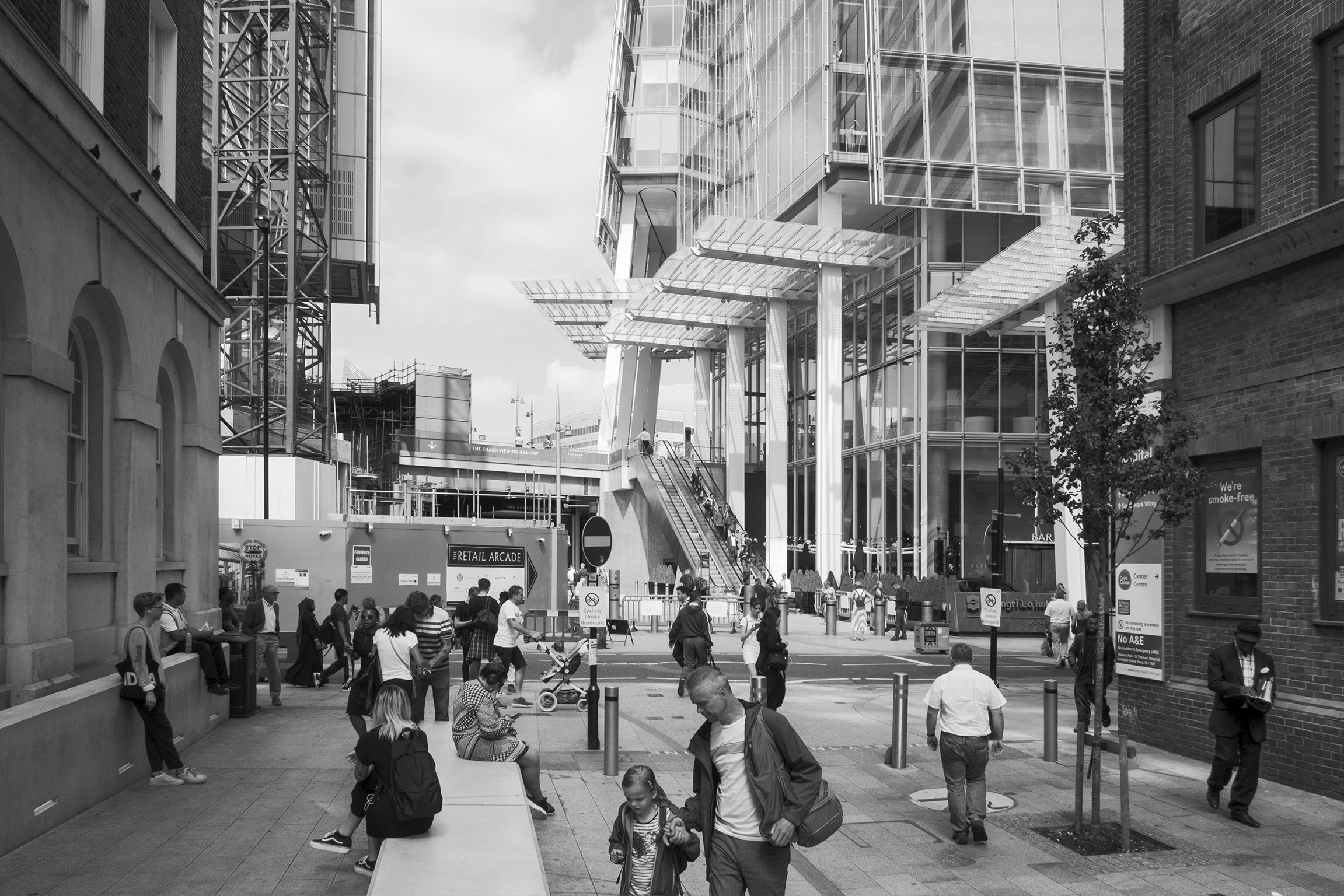

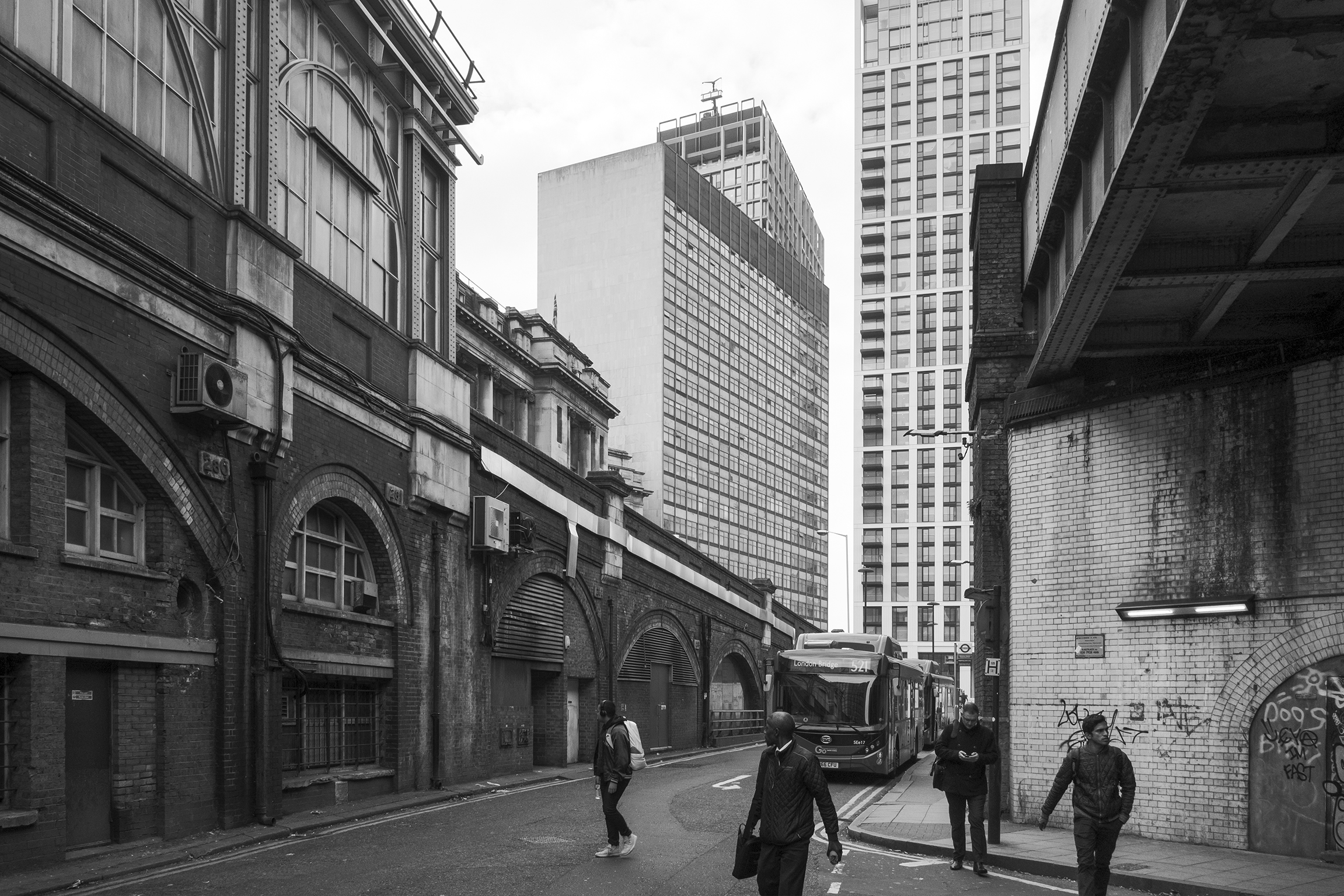
6. East London Tech City
![]()
The so-called Silicon
Roundabout was consolidated in the early years of this century around the Old
Street roundabout in the East End, just a short distance from the City. Mass
redundancies became widespread in the financial recession of 2008, meaning a
large number of highly qualified investment banking employees were suddenly
faced with the need to become entrepreneurs. Moreover, the simultaneous closure
of several offices in the area led to a significant fall in rents, which
encouraged various small technology companies to take up residence. By 2010,
when David Cameron announced the government’s intention to invest in the growth
of the cluster, some 85 small and medium sized start-ups were already operating
in the area. Among the most successful were Songkick, Tweetdeck, Dopplr and
Last.fm. Cameron announced his intention to create “one of the world’s great
technology centres”, capable of competing on an equal footing with Silicon
Valley. The Tech City Investment Organisation was born in the same year with
the aim of attracting investors from all over the world. The plan was to
connect financial capital to the creative hub that had been established in the
area. The agency was headed by Eric Van der Kleij, who since 2006 had been helping
the government develop the Global Entrepreneur Programme to attract emerging
technology companies on a global scale. Through the exceptional issuance of
talent visas for foreigners, 150 technology projects managed to set up in the
city by drawing on staff from all over the world. One of the first initiatives by
the new agency was the demarcation of an expanded urban area to accommodate
growing investment. In the words of Van der Kleij: “There is a lot of land in
the corridor from Shoreditch to the Olympic park in Stratford. It will become a
natural magnet for larger companies”.
![]()



7. Tottenham Court Road
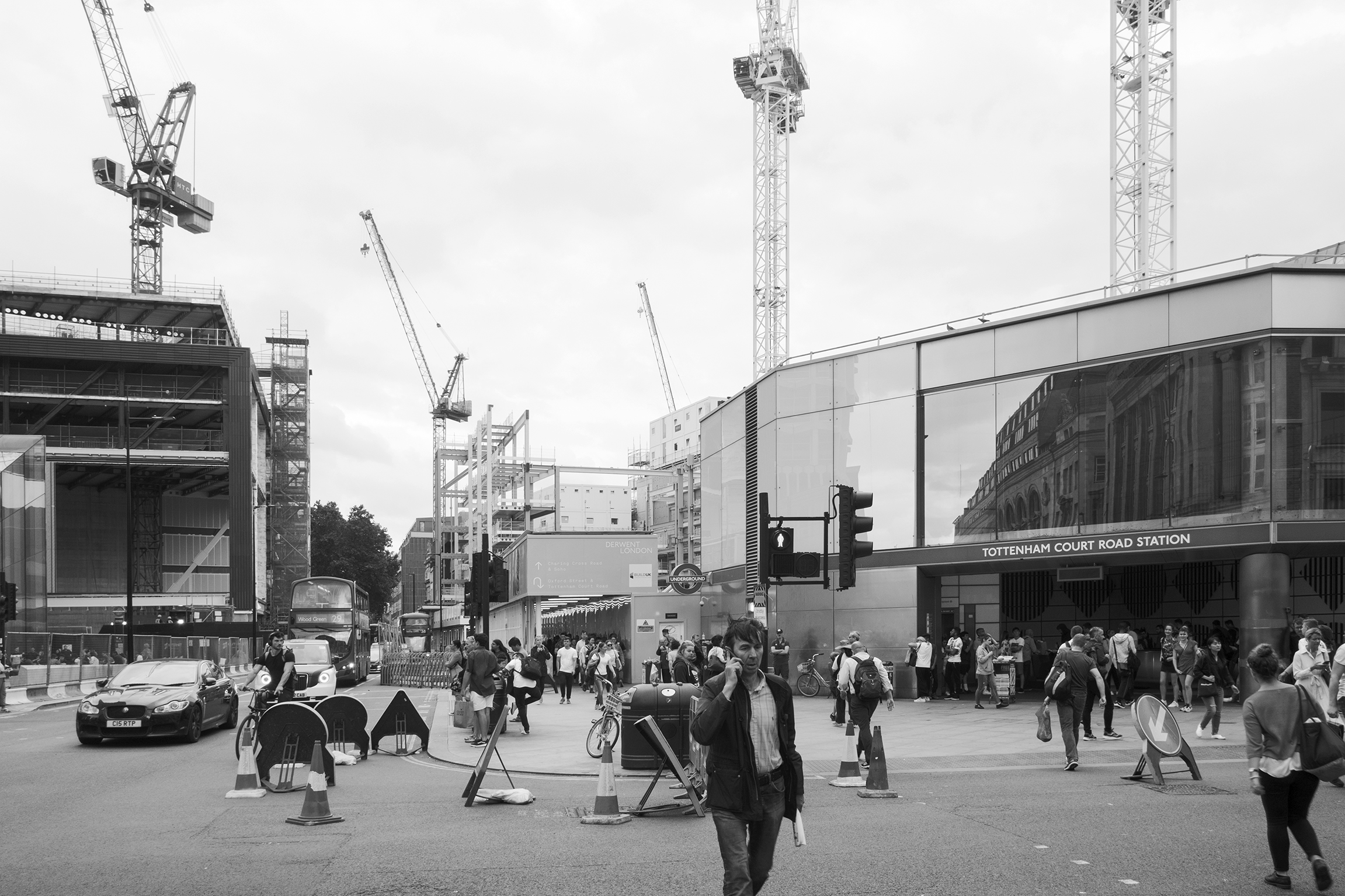
After various delays, the final opening of the
Elizabeth Line, which will cross the city centre, is scheduled for the summer
of 2022. Taking advantage of some sections that had already been built, the new
line will connect Heathrow Airport to such significant locations as the City,
Canary Wharf, Paddington, Stratford and Tottenham Court Road in a matter of
minutes. The line’s 73 miles will also connect towns far from the
centre, such as Reading in the west and Shenfield in the east. After several
setbacks and cost overruns, completion of the work begun in 2008 will require
the extraordinary sum of £18 billion. This giant infrastructure, which will
significantly cut travel times between some of the city’s most significant areas,
has already made its mark on the places it will pass through. Whether
consolidated or emerging areas, they are already seen as strategic locations
for investment.
![]()
Tottenham Court Road station, one of the forty-seven on the line, has recently reopened. Located in the West End, at the crossroads of Soho, Bloomsbury, Fitzrovia and Covent Garden, some of the city centre’s most prominent property developments can be found nearby. The Almacantar development, for example, converted the listed Centre Point, a brutalist skyscraper designed by Richard Seifert & Partners in 1966, into a residential complex of luxury homes sold for between £1.8 million and £55 million (for a studio with one bedroom to a two-storey penthouse respectively). Next to this is Central St. Giles, the multiple-use complex designed by Renzo Piano, which boasts Mindshare, NBC and Google among its tenants, and whose apartments were mostly sold in Hong Kong, Singapore and Malaysia to be used by their owners on sporadic visits to the city, or by their children when they study at nearby universities. In the area, investment in the most luxurious segment of the housing stock has experienced great growth in recent years. In 2017, London reached fifth spot on the world ranking of cities with the most multi-millionaires as residents.

Tottenham Court Road station, one of the forty-seven on the line, has recently reopened. Located in the West End, at the crossroads of Soho, Bloomsbury, Fitzrovia and Covent Garden, some of the city centre’s most prominent property developments can be found nearby. The Almacantar development, for example, converted the listed Centre Point, a brutalist skyscraper designed by Richard Seifert & Partners in 1966, into a residential complex of luxury homes sold for between £1.8 million and £55 million (for a studio with one bedroom to a two-storey penthouse respectively). Next to this is Central St. Giles, the multiple-use complex designed by Renzo Piano, which boasts Mindshare, NBC and Google among its tenants, and whose apartments were mostly sold in Hong Kong, Singapore and Malaysia to be used by their owners on sporadic visits to the city, or by their children when they study at nearby universities. In the area, investment in the most luxurious segment of the housing stock has experienced great growth in recent years. In 2017, London reached fifth spot on the world ranking of cities with the most multi-millionaires as residents.
 In a recent study published by Transparency
International U.K. entitled Faulty Towers: Understanding the Impact of
Overseas Corruption on the London Property Market has shown that of the
apartments sold in fourteen new luxury buildings, 40% were purchased by groups
or individuals from countries with a high rate of corruption (Russia, China,
Malaysia, Singapore, Brazil, United Arab Emirates and Qatar). According to the
monograph, demand for property in London increases in periods of political
instability such as the Arab Spring and anti-corruption protests in China.
These financial flows seek refuge value in real estate. The consequences of
this global money-laundering stream are notoriously distorting the housing
market, the report says. Firstly, it leads to a rise in prices, and secondly,
it directs the production of new housing towards foreign buyers. While new
apartments remain empty, local residents are forced to seek out affordable
offers by moving further and further away, and thus the city grows by becoming empty.
In a recent study published by Transparency
International U.K. entitled Faulty Towers: Understanding the Impact of
Overseas Corruption on the London Property Market has shown that of the
apartments sold in fourteen new luxury buildings, 40% were purchased by groups
or individuals from countries with a high rate of corruption (Russia, China,
Malaysia, Singapore, Brazil, United Arab Emirates and Qatar). According to the
monograph, demand for property in London increases in periods of political
instability such as the Arab Spring and anti-corruption protests in China.
These financial flows seek refuge value in real estate. The consequences of
this global money-laundering stream are notoriously distorting the housing
market, the report says. Firstly, it leads to a rise in prices, and secondly,
it directs the production of new housing towards foreign buyers. While new
apartments remain empty, local residents are forced to seek out affordable
offers by moving further and further away, and thus the city grows by becoming empty.
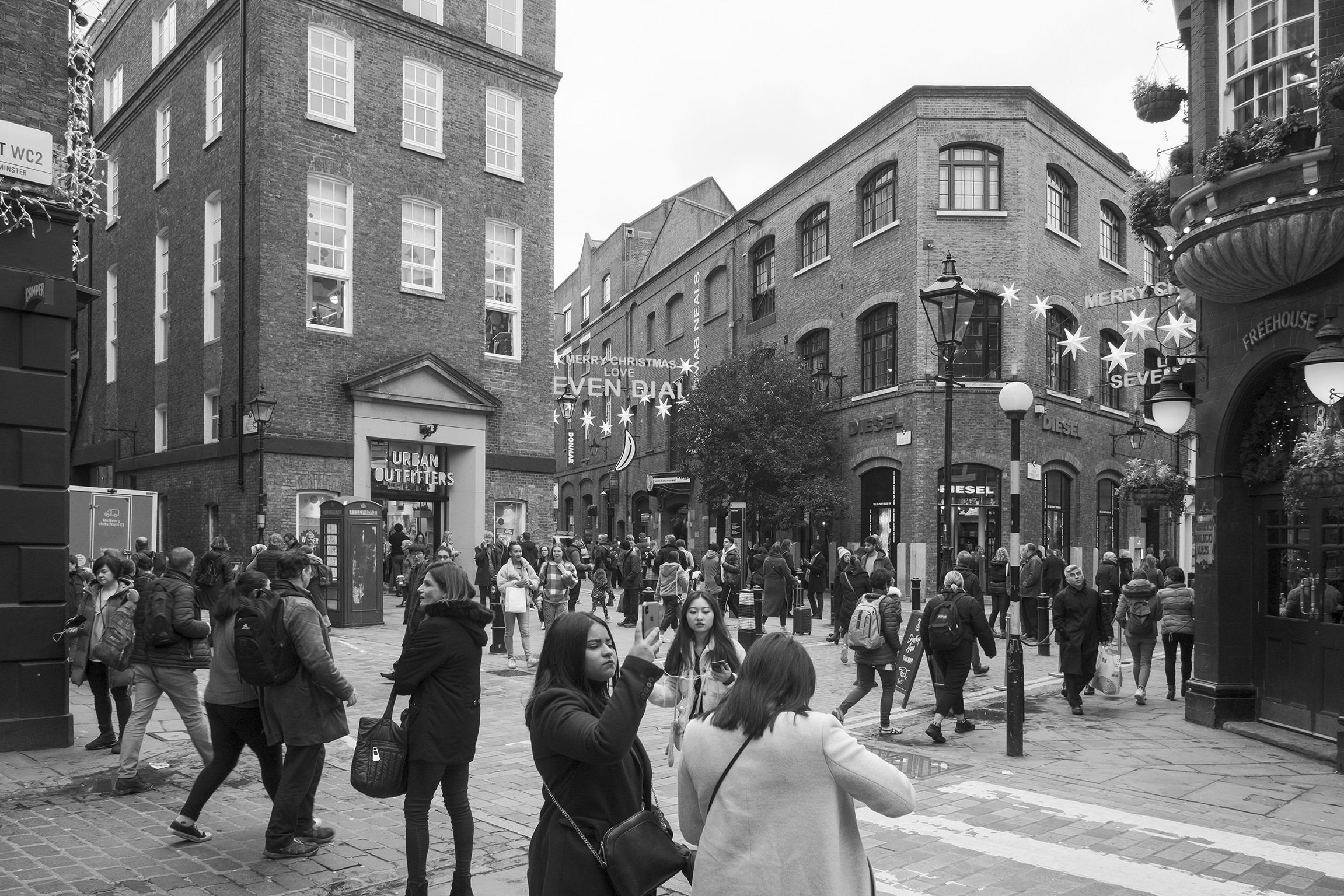
8. Euston, St Pancras, King’s Cross

King’s Cross Station was originally designed by the architect
Lewis Cubitt for the Great Exhibition of 1851. It was built next to Saint
Pancras, and both stations together covered a large area of land. A complex was
built on the area for the storage and management of raw materials and goods
such as coal, potatoes and grain. Regent’s Canal, which had flown through the land
since 1820, was used for the distribution of goods. Coal from the mining basins
in the industrial North fed the boilers of the adjacent gasometers, which in
turn supplied the city’s night lighting. Passengers heading north, however,
used to go to nearby Euston station. More central and more suitable for the
movement of people, it was, in 1837, the first railway station within London.
For a time it was the terminus of the London-Birmingham line. A few years
later, in 1849, it was extended and rebuilt by Philip Charles Hardwick in a
classical style. For its great hall, John Thomas was commissioned to create a
group of allegorical figures representing the cities the train travelled to:
Birmingham, Liverpool and Manchester.
![]()
The decline of the area came after the Second World War, when the old railway facilities gradually became obsolete. The once frenetic activity came to a definitive halt in 1981. The area, remote and considerably large, was abandoned and fell outside the radar of the authorities. The old hangars and warehouses were occupied, sometimes illegally, by artists and designers. On the other hand, the area soon became known among the youth for its raves and gained popularity beyond Bohemian circles. However, not everything there was so colourful. The use and abuse of drugs and the associated market, and the presence of prostitution contributed to the area’s poor reputation. Even though prices hit rock bottom, small investors kept away. It was too risky to open a business in the area.
![]()
This remained so until in the early 1990s, when the government founded the King’s Cross Partnership to attract investors to undertake the rehabilitation of the site. The opening of cultural institutions was part of the recovery strategy. In 1992 the London Canal Museum was opened and the British Library opened its current premises in 1997. However, investors did not really pay attention until 2000, when the launch of High Speed 1 was announced, a project to build the infrastructure for what is now the Euro Star, a high-speed train that connected St. Pancras station to Paris, Brussels, Amsterdam and Rotterdam in record time.

The decline of the area came after the Second World War, when the old railway facilities gradually became obsolete. The once frenetic activity came to a definitive halt in 1981. The area, remote and considerably large, was abandoned and fell outside the radar of the authorities. The old hangars and warehouses were occupied, sometimes illegally, by artists and designers. On the other hand, the area soon became known among the youth for its raves and gained popularity beyond Bohemian circles. However, not everything there was so colourful. The use and abuse of drugs and the associated market, and the presence of prostitution contributed to the area’s poor reputation. Even though prices hit rock bottom, small investors kept away. It was too risky to open a business in the area.

This remained so until in the early 1990s, when the government founded the King’s Cross Partnership to attract investors to undertake the rehabilitation of the site. The opening of cultural institutions was part of the recovery strategy. In 1992 the London Canal Museum was opened and the British Library opened its current premises in 1997. However, investors did not really pay attention until 2000, when the launch of High Speed 1 was announced, a project to build the infrastructure for what is now the Euro Star, a high-speed train that connected St. Pancras station to Paris, Brussels, Amsterdam and Rotterdam in record time.
 When the route opened in 2007, the area was already a
hive of new developments. In 2006, Allies and Morrison and Porphyrios
Associates obtained a building permit for the regeneration plan. It was one of
the largest projects in Europe, covering an area of 24 hectares, with an
abundance of residential, commercial, office and leisure space. It was then
that, with the aim of developing the project, King’s Cross Central Ltd. was set
up, with the participation of Argent Group, London & Continental Railways Ltd.
and DHL. Within the framework of the project, we could highlight the following features:
the rehabilitation and extension of King’s Cross station by John McAslan +
Partners; One Pancras Square, David Chipperfield’s office building which
articulates the entrance to the block of the same name; and Coal Drops Yard,
the conversion of the old coal warehouses into a shopping centre for
avant-garde fashion designed by Thomas Heatherwick. Perhaps the best-known tenant
is Google: the Internet giant, which already has a space in Pancras Square,
announced in 2017 that it would invest one billion pounds in the construction
of its new headquarters. Furthermore, at the nearby station of Euston High
Speed 2 is already under development, a new high-speed line that will reach
Birmingham in 2026 and from there extend to Manchester, Sheffield and Leeds in
the early years of the coming decade. When work is completed, some of these
cities will be less than a short journey away from many neighbourhoods in the
city itself, perhaps re-establishing the flow of capital between the old
industrial cities of the North and London.
When the route opened in 2007, the area was already a
hive of new developments. In 2006, Allies and Morrison and Porphyrios
Associates obtained a building permit for the regeneration plan. It was one of
the largest projects in Europe, covering an area of 24 hectares, with an
abundance of residential, commercial, office and leisure space. It was then
that, with the aim of developing the project, King’s Cross Central Ltd. was set
up, with the participation of Argent Group, London & Continental Railways Ltd.
and DHL. Within the framework of the project, we could highlight the following features:
the rehabilitation and extension of King’s Cross station by John McAslan +
Partners; One Pancras Square, David Chipperfield’s office building which
articulates the entrance to the block of the same name; and Coal Drops Yard,
the conversion of the old coal warehouses into a shopping centre for
avant-garde fashion designed by Thomas Heatherwick. Perhaps the best-known tenant
is Google: the Internet giant, which already has a space in Pancras Square,
announced in 2017 that it would invest one billion pounds in the construction
of its new headquarters. Furthermore, at the nearby station of Euston High
Speed 2 is already under development, a new high-speed line that will reach
Birmingham in 2026 and from there extend to Manchester, Sheffield and Leeds in
the early years of the coming decade. When work is completed, some of these
cities will be less than a short journey away from many neighbourhoods in the
city itself, perhaps re-establishing the flow of capital between the old
industrial cities of the North and London.

9. Victoria Street

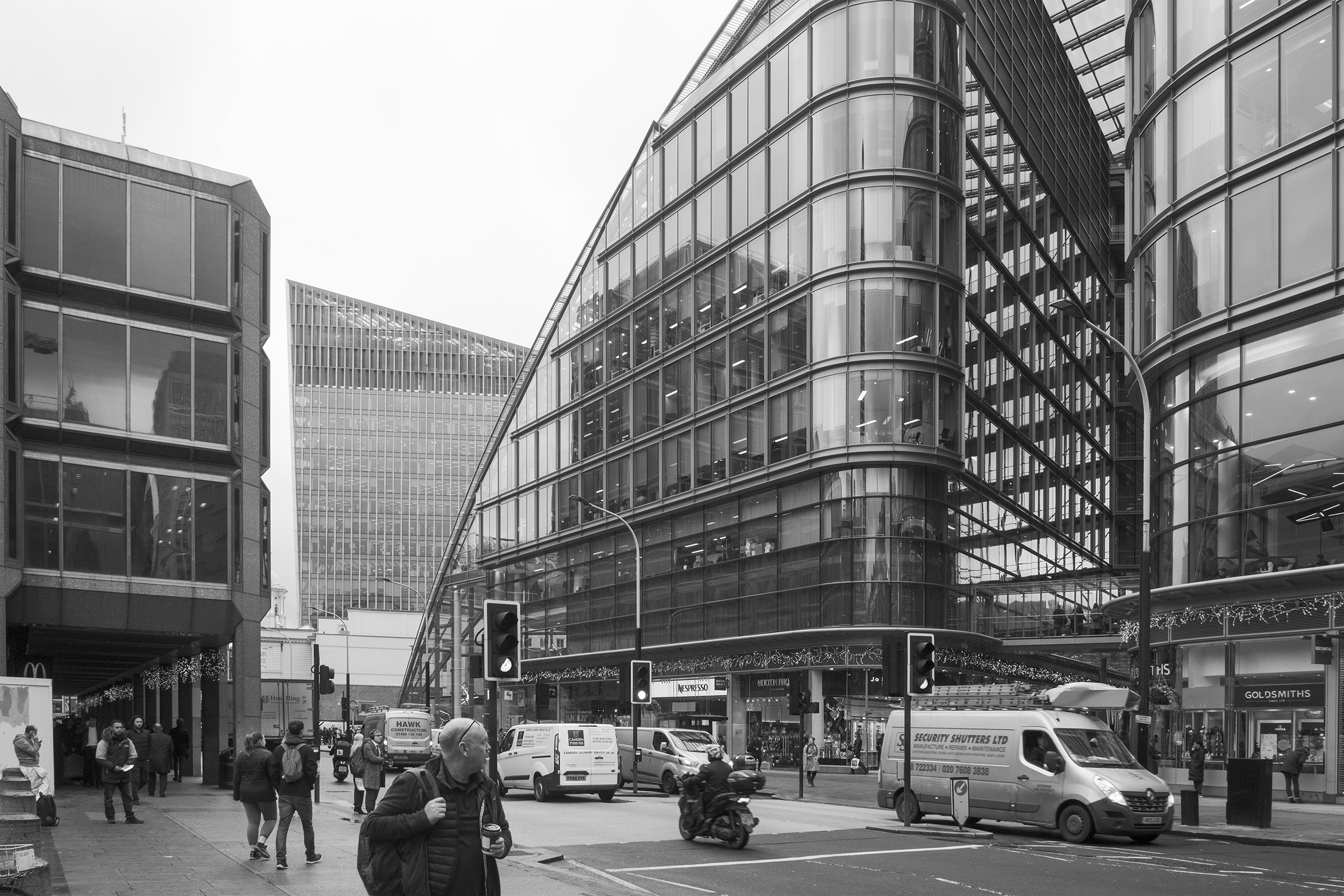


10. Canary Wharf

When, on the morning of 27 October 1986, the changes
in financial regulation promoted by Margaret Thatcher’s executive came into
effect, stock market activity grew so much that the date would be remembered as
the day of the “Big Bang”. Until then, the privatization programme of
parastatal industries —in force since 1983— had not succeeded in obtaining a
significant improvement in business performance. Faced with a wave of mass
layoffs, severe discontent spread among the working classes, who, seeing their
future threatened, waged an open battle against the government’s restructuring.
In 1985, after a year of strikes without reaching any agreements, Thatcher
definitively defeated the National Union of Miners. The series of strikes had
resulted in the loss of 27 million working days in 1984, and although the state
collected about £40 billion from the sale of businesses and public housing, the
United Kingdom’s economic position did not improve internationally. At this
juncture, the package of measures that deregulated the London stock exchange
came to play a decisive role in the take-off of the pound. The City managed to
reposition itself as one of the world’s most important financial centres and
marked the roadmap for the liberalization of its counterparts in New York and
Tokyo. So dramatic was the effect that in 2010 Nigel Lawson1 declared that the
financial recession of 2007-2012 (the biggest crisis in capitalism since the
Great Depression) was an unintended consequence of that transformation.
![]()
Given the extraordinary momentum in the sector, the Docklands Development Corporation2 undertook the construction of Canary Wharf a year later, in partnership with the Canadian tycoon Paul Reichmann. The new financial estate was to be built on the ruins of London’s old port. The world’s once busiest docks had fallen into disrepair in the containerization of the 1960s, due to their shallow waters. Activity ceased definitively in 1980, eliminating a large number of jobs and leaving a vast amount of land available. A rapid re-classification as an Urban Enterprise Zone3 followed. In addition to major publicly funded works such as land decontamination and drainage and the construction of the DLR4, which linked up the new development to the rest of the city, many office skyscrapers were privately built. For example, One Canada Square, commissioned by César Pelli, crowned by a large stainless steel pyramid, was the highest building in the United Kingdom until 2012. Current tenants of the financial centre include, among others: Bank of America, Barclays, China Construction Bank, Citigroup, Credit Suisse, Deutsche Bank, HSBC, J. P. Morgan Chase, KPMG, MasterCard, Moody’s, Morgan Stanley, The Economist Group, Thompson Reuters, Total and Wells Fargo.

Given the extraordinary momentum in the sector, the Docklands Development Corporation2 undertook the construction of Canary Wharf a year later, in partnership with the Canadian tycoon Paul Reichmann. The new financial estate was to be built on the ruins of London’s old port. The world’s once busiest docks had fallen into disrepair in the containerization of the 1960s, due to their shallow waters. Activity ceased definitively in 1980, eliminating a large number of jobs and leaving a vast amount of land available. A rapid re-classification as an Urban Enterprise Zone3 followed. In addition to major publicly funded works such as land decontamination and drainage and the construction of the DLR4, which linked up the new development to the rest of the city, many office skyscrapers were privately built. For example, One Canada Square, commissioned by César Pelli, crowned by a large stainless steel pyramid, was the highest building in the United Kingdom until 2012. Current tenants of the financial centre include, among others: Bank of America, Barclays, China Construction Bank, Citigroup, Credit Suisse, Deutsche Bank, HSBC, J. P. Morgan Chase, KPMG, MasterCard, Moody’s, Morgan Stanley, The Economist Group, Thompson Reuters, Total and Wells Fargo.

The Canary Wharf Group PLC (CWG), which promoted the development of the centre of the same name and still owns 49% of its assets, has managed to position itself in the last decade as the largest developer of office buildings in the city. Controlled since 2015 by Brookfield Property Partners (based in Hamilton, Bermuda) and the Qatar Investment Authority, the group has assets valued at £4.9 billion and has undertaken the construction of a new neighbourhood on the land adjacent to the financial district. Christened Wood Wharf, it will focus on residential use and is expected to hold 3,600 new homes for “ambitious Londoners”. The plan, which was to be developed by a consortium made up of the state-owned company that owns the land, British Waterways (50%), the developer Ballymore (25%) and CWG itself, will in the end be undertaken by the latter alone after it paid its former partners £90,000,000 for 100% control of the project in 2012. As reflected in the master plan drawn up by Terry Farrel in 2013, the new neighbourhood will consist of 30 buildings, of which at least one will be residential and another will be an office building with an “iconic nature”. Herzog & de Meuron, Allies & Morrison and Stanton Williams will be in charge of designing them. The last phase of construction has to be completed in time for the opening of the new Crossrail / Elisabeth Line in 2021.
1. He held various different positions in Thatcher’s executive; from 1983 to 1989 he was Minister of Finance and supervisor of the “Big Bang”.
2. Founded in 1980 by Michael Heseltine, Thatcher’s environmental secretary.
3. Area with significant tax exemptions, low regulation and high investor attractiveness.
4. Light rail system. Stands for Docklands Light Railway.

11. Stratford
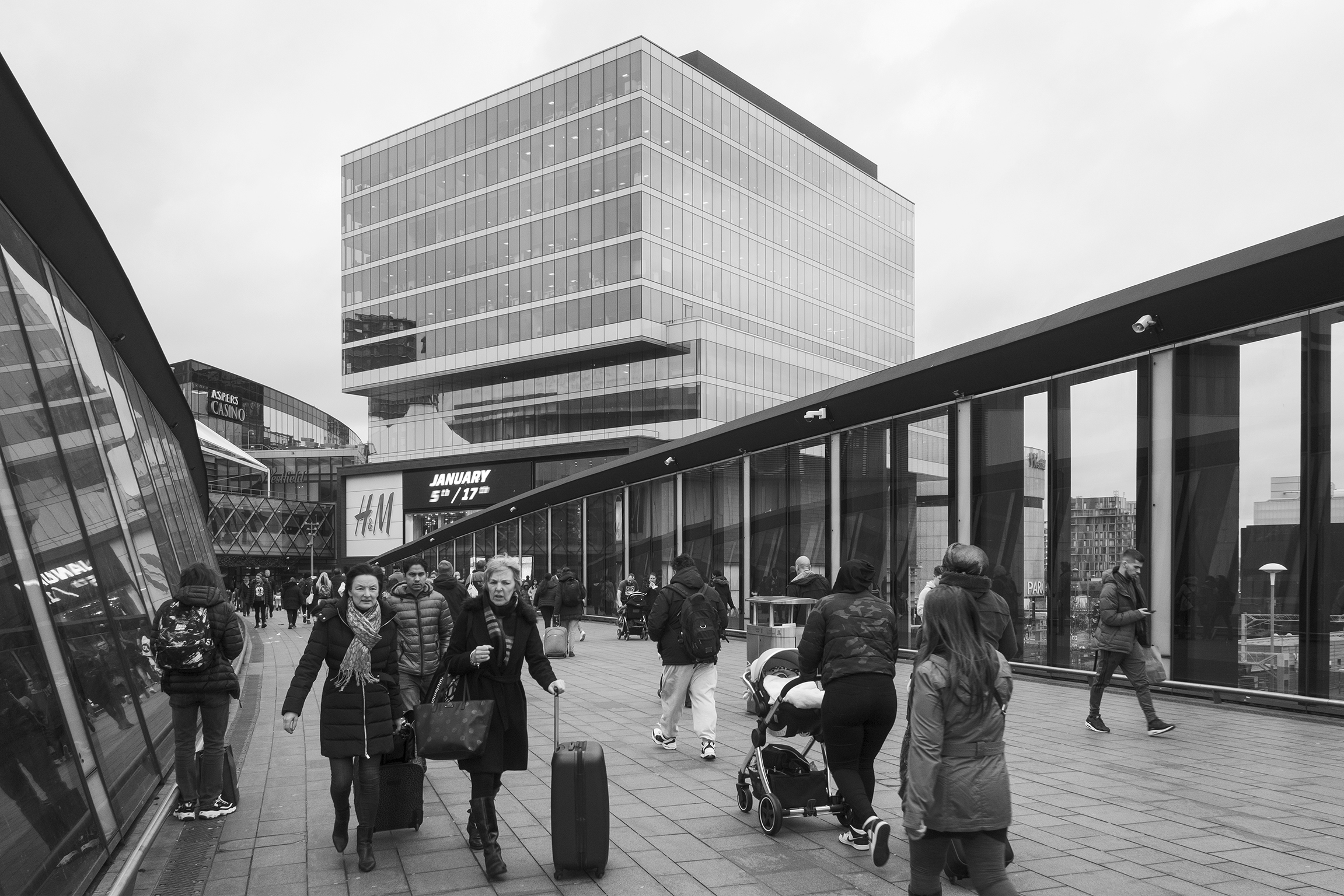
As the memory of a pleasant life in a green land, and
at the same time as the promise of a better future: this is how the opening
ceremony of the Olympic Games led by Danny Boyle began in 2012. However, that
peaceful and rural existence was soon threatened by a group of men in top hats.
Led by Kenneth Branagh as Brunel and to the rhythm of a thousand proletarian
drummers, these Victorian industrialists brought seven smoking chimneys out of
the bowels of the earth. The legion of volunteer workers who sprang from a huge
uprooted oak tree were joined by the fallen from the two World Wars, a group of
suffragettes, the Jarrow Crusaders and the Sgt. Pepper’s Lonely
Hearts Club Band. They all danced and paraded while everything that was green
on the scene turned to grey: the rural village turned into Pandemonium. To cap
the show, a group of metallurgists forged five large Olympic rings that rose
incandescent above the heads of those who attended the Olympic stadium that
night. A rain of fire melted into the applause and cheers of the attending
crowd. The London Games had begun.
![]()
Stratford, too, was a farming community in the Lower Lea Valley. Its proximity to London and an unobstructed road made it possible for merchants and financiers to come here and enjoy the peace and calm of the countryside. The River Lea served to demarcate the metropolitan area, and when industry was banned within the townships in 1844, it moved to the river banks. The coming of the train and the river connection to the Thames wharves favoured rapid development. Very soon numerous factories were set up for the production of pharmaceuticals and chemicals. The suburb grew to become one of the largest railway production enclaves in all of England. By the time the factory closed in 1991, 1,682 locomotives, 5,500 passenger carriages and 33,000 freight wagons had been manufactured there. As if it were Boyle’s Pandemonium, the trauma of the Industrial Revolution devastated this small and picturesque town. Perhaps, after the decline of their factories, the promise of a better future can now be kept.
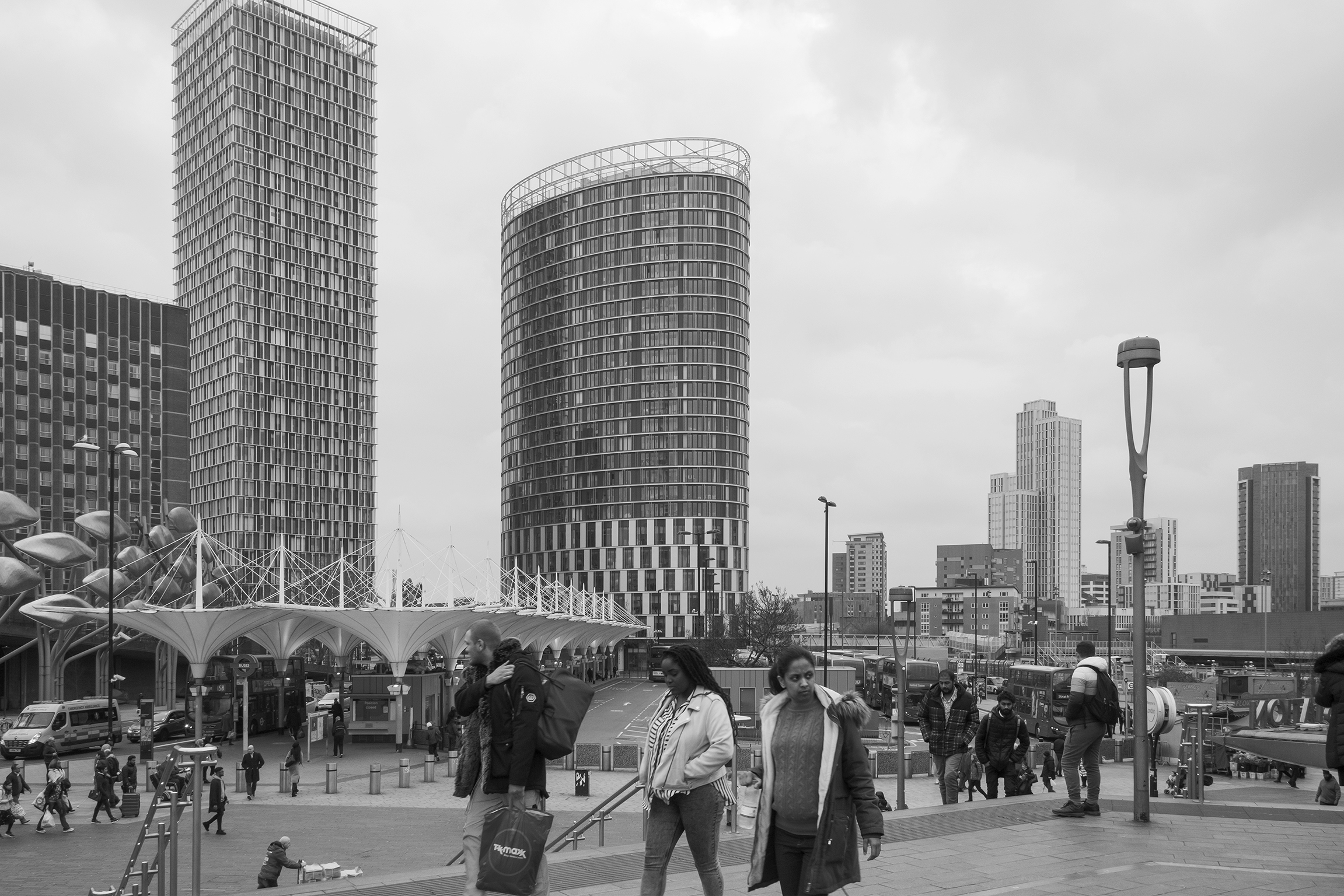
Stratford, too, was a farming community in the Lower Lea Valley. Its proximity to London and an unobstructed road made it possible for merchants and financiers to come here and enjoy the peace and calm of the countryside. The River Lea served to demarcate the metropolitan area, and when industry was banned within the townships in 1844, it moved to the river banks. The coming of the train and the river connection to the Thames wharves favoured rapid development. Very soon numerous factories were set up for the production of pharmaceuticals and chemicals. The suburb grew to become one of the largest railway production enclaves in all of England. By the time the factory closed in 1991, 1,682 locomotives, 5,500 passenger carriages and 33,000 freight wagons had been manufactured there. As if it were Boyle’s Pandemonium, the trauma of the Industrial Revolution devastated this small and picturesque town. Perhaps, after the decline of their factories, the promise of a better future can now be kept.
 Although the Olympics were over, Queen Elizabeth
Park, which stretched across five districts, still held a large amount of land
to build on. In the same year of 2012, in front of the park and on the site of
the former locomotive depot, Westfield City, the second largest shopping centre
in Europe and the main source of employment in the area, opened its doors. In
its 177,000 m2 there are around 280 shops, 70 restaurants, a large supermarket,
a hotel with 350 rooms and a casino. The shopping mall, which until 2018
belonged to the Australian company of the same name, has served as a pole of
attraction on which several major developments have been based in recent years.
Among the four newly built neighbourhoods that surround it is the Olympic
Village, whose facilities were designed to be converted into 3,500 homes after
the Games. Since then, around 12,000 homes have been built in the various
Stratford subdivisions. The residential park is not the only one on the rise:
the developers Lend Lease and London Continental Railways are building the
International Quarter, a large business park that will cover an area of 3.7 km2
and involve an investment of £2,000 million, starting in 2014. Among the
clients that have promoted the complex are Sadler’s Wells,
the BBC, the University of the Arts (College of Fashion), and the new
headquarters of the Victoria & Albert Museum. The developer boasts the
participation of studios such as Rogers Stirk Harbour + Partners and Allies
& Morrison. It is expected that the site will become the second largest
business centre in the city, second only to Canary Wharf.
Although the Olympics were over, Queen Elizabeth
Park, which stretched across five districts, still held a large amount of land
to build on. In the same year of 2012, in front of the park and on the site of
the former locomotive depot, Westfield City, the second largest shopping centre
in Europe and the main source of employment in the area, opened its doors. In
its 177,000 m2 there are around 280 shops, 70 restaurants, a large supermarket,
a hotel with 350 rooms and a casino. The shopping mall, which until 2018
belonged to the Australian company of the same name, has served as a pole of
attraction on which several major developments have been based in recent years.
Among the four newly built neighbourhoods that surround it is the Olympic
Village, whose facilities were designed to be converted into 3,500 homes after
the Games. Since then, around 12,000 homes have been built in the various
Stratford subdivisions. The residential park is not the only one on the rise:
the developers Lend Lease and London Continental Railways are building the
International Quarter, a large business park that will cover an area of 3.7 km2
and involve an investment of £2,000 million, starting in 2014. Among the
clients that have promoted the complex are Sadler’s Wells,
the BBC, the University of the Arts (College of Fashion), and the new
headquarters of the Victoria & Albert Museum. The developer boasts the
participation of studios such as Rogers Stirk Harbour + Partners and Allies
& Morrison. It is expected that the site will become the second largest
business centre in the city, second only to Canary Wharf.

